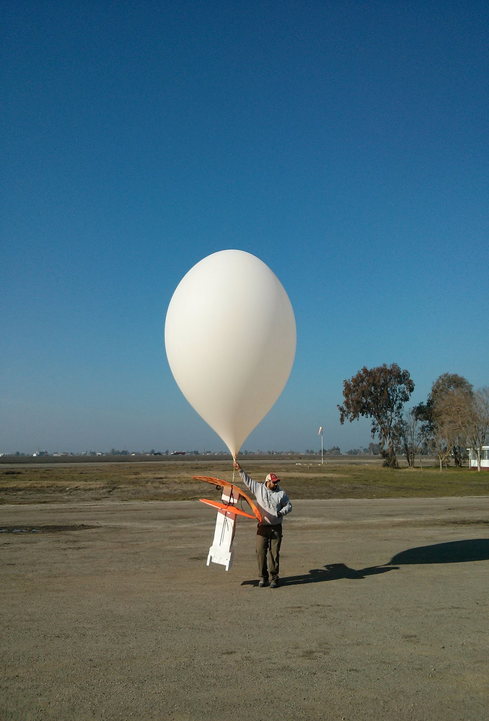Internet catapult: Google automates the launch of Project Loon Internet balloons

Internet ball / Google
Late last week, Mike Cassidy, vice president of Google and project manager for Project Loon, shared with Bloomberg news on the progress of the project. His team built a special system for launching Autolauncher balls and learned how to build a network of transmitters, increasing the minimum required distance to the nearest ground-based Internet distribution point at times.
Project Project Loon from Google aims to provide Internet access in sparsely populated, difficult to reach or poor areas of the planet. The idea is to launch repeaters on balloons such as those used in weather probes. The project was conceived in 2011.
')
In 2013, the first launches of balls took place. Then, at an early stage of the project, the balls could stay in the air for no more than 5 days, and each ball needed at least a dozen employees to launch.
In 2014, the project was successfully continued . Balloons taught to stay in the air for quite a long time without damage, despite the influence of the aggressive environment of the upper layers of the atmosphere. The most successful ball from this point of view, codenamed “Marathoner”, lasted 134 days in the air.
In May 2015, the system was ready to launch the Autolauncher balls (Autorunner), which the company affectionately nicknamed "Birdcage" due to the fact that different ball models get nicknames for birds. The team already had models Falcon and Grakl, and the latter is called the New Zealand owl.
With the help of the Autorunner, only four people can launch one ball every 15 minutes. Wind curtains "cells" allow you to do this in the presence of wind speeds of up to 24 km / h. Without this device it was possible to launch one ball only every 45 minutes, and the wind was limited to a speed of 9 km / h.

Birdcage / Google
As Cassidy explains, the fast and reliable launch of the balls is necessary for the successful operation of the project - there must be a large number of repeaters in the air so that you can cover a decent area with a reliable Internet connection.
Another unconditional achievement of the team was the ability to build a coherent network of repeaters, which will increase the minimum distance to the nearest stationary access point. Previously, the ball needed to move away no more than 80 km from the terrestrial Internet connection.
Now, repeaters can transmit a signal to each other, and this allows you to access the Internet via an air network at distances from 400 to 800 km from the nearest fixed repeater. Through this approach, just eight points of ground will be enough to cover the entire territory of West Africa.
Cassidy says that the most difficult thing was to find ways to direct the balls at each other, while the wind chases them around the upper atmosphere, where the temperature reaches −50 degrees Celsius. At these temperatures, the metal joints and motors begin to behave very badly.
So far, in the places where the tests were conducted - in Australia, Chile, New Zealand, Brazil, etc., it turned out to provide only fragmentary access to the Internet. The team will continue to continue testing its airborne Internet, improve its performance, and by the end of 2016, expand the project’s presence in Africa, Latin America and Southeast Asia.
In addition to Google, the idea of an affordable and ubiquitous Internet connection is being developed by Ilon Musk, planning to launch 700 satellites into near-earth orbit. And Facebook wants to solve this problem by launching unmanned aerial vehicles powered by solar energy. At the end of March, the company conducted successful tests of its drone over the territory of Great Britain.
Source: https://habr.com/ru/post/367255/
All Articles